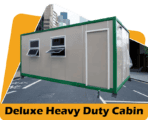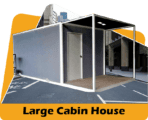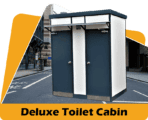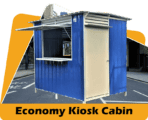
Blog
Centralised Labour Quarters (CLQ Cabin): Malaysia’s Solution to Migrant Worker Housing Woes

Centralised Labour Quarters (CLQ Cabin): Malaysia’s Solution to Migrant Worker Housing Woes
1. Introduction to Centralised Labour Quarters (CLQs)
Centralised Labour Quarters (CLQs) are a significant development in Malaysia’s approach to worker accommodation, particularly for migrant and construction workers. These purpose-built facilities are designed to provide safe, hygienic, and comfortable living conditions, addressing many of the issues associated with traditional worker housing.
Definition and Purpose
CLQs are centralized housing units specifically constructed to accommodate large numbers of workers, particularly those in the construction and industrial sectors. The primary purpose of CLQs is to improve the living conditions of workers by providing:
- Adequate Space: Ensuring each worker has sufficient personal space.
- Sanitation Facilities: Access to clean and well-maintained toilets and showers.
- Amenities: Facilities such as kitchens, recreational areas, and medical services.
Historical Context
The concept of CLQs emerged as a response to the poor living conditions often found in makeshift worker accommodations at construction sites. These conditions included overcrowding, lack of sanitation, and inadequate safety measures, which not only affected the health and well-being of workers but also impacted their productivity and morale.
Current State in Malaysia
In Malaysia, the government has recognized the importance of CLQs and has implemented guidelines and regulations to ensure these facilities meet minimum standards. The Ministry of Housing and Local Government (KPKT) has outlined specific requirements for space, sanitation, and amenities in CLQs to ensure they provide a decent living environment for workers.
Key Features of CLQs
- Safety and Security: CLQs are designed with safety in mind, including fire safety measures, secure entry and exit points, and regular inspections.
- Hygiene and Sanitation: Adequate toilets, showers, and waste disposal systems are mandatory to maintain hygiene standards.
- Comfort and Amenities: CLQs often include recreational areas, kitchens, and medical facilities to enhance the quality of life for residents.
- Regulation and Compliance: CLQs must comply with government regulations, which include regular inspections and adherence to health and safety standards.
Table: Key Features of CLQs
| Feature | Description |
|---|---|
| Safety and Security | Fire safety measures, secure entry/exit, regular inspections |
| Hygiene and Sanitation | Adequate toilets, showers, waste disposal systems |
| Comfort and Amenities | Recreational areas, kitchens, medical facilities |
| Regulation and Compliance | Adherence to government regulations, regular inspections |
Importance of CLQs
The implementation of CLQs is crucial for several reasons:
- Worker Welfare: Improved living conditions lead to better health and well-being for workers.
- Productivity: Comfortable and safe living environments contribute to higher productivity and morale.
- Employer Benefits: Employers benefit from reduced absenteeism, lower turnover rates, and enhanced reputation.
- Compliance: Adhering to government regulations helps avoid legal issues and penalties.
Conclusion
Centralised Labour Quarters represent a significant step forward in improving the living conditions of migrant and construction workers in Malaysia. By providing safe, hygienic, and comfortable accommodations, CLQs not only enhance the well-being of workers but also offer numerous benefits to employers and the broader community. In the following sections, we will delve deeper into the specific benefits, challenges, and regulatory aspects of CLQs, providing a comprehensive understanding of their impact and importance.

sidekix media l6u4GIKvxBs unsplash scaled
2. Benefits of CLQs for Workers
Centralised Labour Quarters (CLQs) offer numerous benefits for workers, particularly those in the construction and industrial sectors. These benefits extend beyond mere accommodation, significantly improving the overall quality of life and well-being of the workers.
Improved Living Conditions
One of the primary benefits of CLQs is the substantial improvement in living conditions compared to traditional worker housing. Key aspects include:
- Adequate Space: Each worker is provided with sufficient personal space, reducing overcrowding and ensuring privacy.
- Sanitation Facilities: Access to clean and well-maintained toilets and showers helps maintain hygiene and prevent the spread of diseases.
- Comfortable Environment: Proper ventilation, lighting, and temperature control create a comfortable living environment.
Enhanced Safety and Security
Safety and security are paramount in CLQs, with measures in place to protect workers from potential hazards and ensure their well-being:
- Fire Safety: CLQs are equipped with fire safety measures, including fire extinguishers, alarms, and emergency exits.
- Secure Premises: Controlled entry and exit points, along with security personnel, help prevent unauthorized access and ensure the safety of residents.
- Regular Inspections: Routine inspections ensure that safety standards are maintained and any issues are promptly addressed.
Access to Amenities
CLQs provide various amenities that enhance the quality of life for workers:
- Recreational Areas: Spaces for relaxation and social activities help reduce stress and promote mental well-being.
- Medical Facilities: On-site medical services ensure that workers have access to healthcare when needed.
- Kitchens and Dining Areas: Proper cooking and dining facilities allow workers to prepare and enjoy meals in a hygienic environment.
Table: Benefits of CLQs for Workers
| Benefit | Description |
|---|---|
| Improved Living Conditions | Adequate space, sanitation facilities, comfortable environment |
| Enhanced Safety and Security | Fire safety measures, secure premises, regular inspections |
| Access to Amenities | Recreational areas, medical facilities, kitchens and dining areas |
Positive Impact on Health and Well-being
The improved living conditions and access to amenities in CLQs have a direct positive impact on the health and well-being of workers:
- Physical Health: Better hygiene and sanitation reduce the risk of illnesses and infections.
- Mental Health: Access to recreational areas and social activities helps alleviate stress and improve mental health.
- Overall Well-being: A comfortable and safe living environment contributes to the overall well-being and happiness of workers.
Increased Productivity and Morale
When workers are provided with decent living conditions, their productivity and morale are significantly enhanced:
- Reduced Absenteeism: Healthier living conditions lead to fewer sick days and reduced absenteeism.
- Higher Motivation: Workers who feel valued and well-cared-for are more motivated and committed to their work.
- Better Performance: Improved physical and mental health translates to better job performance and efficiency.
Conclusion
The benefits of Centralised Labour Quarters for workers are manifold, ranging from improved living conditions and enhanced safety to access to essential amenities and a positive impact on health and well-being. These benefits not only contribute to the overall quality of life for workers but also lead to increased productivity and morale, creating a win-win situation for both workers and employers. In the next section, we will explore the specific benefits of CLQs for employers, highlighting how these facilities can contribute to a more efficient and productive workforce.
3. Benefits of CLQs for Employers
Centralised Labour Quarters (CLQs) offer numerous advantages for employers, particularly those in the construction and industrial sectors. These benefits extend beyond providing accommodation, significantly impacting the overall efficiency, productivity, and reputation of the company.
Cost-Effective Housing Solution
One of the primary benefits of CLQs for employers is the cost-effectiveness of providing centralized housing for workers. Key aspects include:
- Economies of Scale: By housing a large number of workers in a single location, employers can reduce per capita costs associated with accommodation.
- Reduced Transportation Costs: With workers living close to the worksite, transportation costs and time are minimized.
- Lower Maintenance Costs: Centralized facilities are easier and more cost-effective to maintain compared to multiple scattered accommodations.
Improved Worker Productivity
Providing decent living conditions through CLQs has a direct positive impact on worker productivity:
- Healthier Workforce: Better living conditions lead to improved health, reducing absenteeism and sick days.
- Higher Morale: Workers who feel valued and well-cared-for are more motivated and committed to their work.
- Increased Efficiency: A comfortable and safe living environment translates to better job performance and efficiency.
Enhanced Company Reputation
Investing in CLQs can significantly enhance the reputation of a company:
- Corporate Social Responsibility (CSR): Providing decent living conditions for workers demonstrates a commitment to CSR, improving the company’s image.
- Attracting Talent: A reputation for good worker welfare can attract skilled workers and reduce turnover rates.
- Compliance and Avoidance of Legal Issues: Adhering to government regulations and providing proper housing helps avoid legal issues and penalties.
Table: Benefits of CLQs for Employers
| Benefit | Description |
|---|---|
| Cost-Effective Housing Solution | Economies of scale, reduced transportation costs, lower maintenance costs |
| Improved Worker Productivity | Healthier workforce, higher morale, increased efficiency |
| Enhanced Company Reputation | CSR, attracting talent, compliance and avoidance of legal issues |
Regulatory Compliance
CLQs help employers comply with government regulations and guidelines, which is crucial for legal and operational reasons:
- Adherence to Standards: CLQs are designed to meet minimum standards for space, sanitation, and amenities as outlined by the Ministry of Housing and Local Government (KPKT).
- Regular Inspections: Compliance with regulations ensures that facilities are regularly inspected and maintained, preventing potential legal issues.
- Worker Rights: Providing proper housing aligns with international standards for worker rights and welfare, reducing the risk of exploitation and human trafficking allegations.
Long-Term Investment
While the initial investment in CLQs may be significant, the long-term benefits outweigh the costs:
- Durability and Longevity: High-quality CLQs are built to last, reducing the need for frequent replacements or repairs.
- Scalability: CLQs can be scaled up or down based on the workforce size, providing flexibility for employers.
- Asset Value: Well-maintained CLQs can be considered valuable assets, potentially increasing the overall value of the company.
Conclusion
The benefits of Centralised Labour Quarters for employers are extensive, ranging from cost savings and improved productivity to enhanced reputation and regulatory compliance. By investing in CLQs, employers can create a more efficient, productive, and legally compliant workforce, ultimately contributing to the long-term success of their business. In the next section, we will explore the drawbacks and challenges associated with CLQs, providing a balanced view of this housing solution.
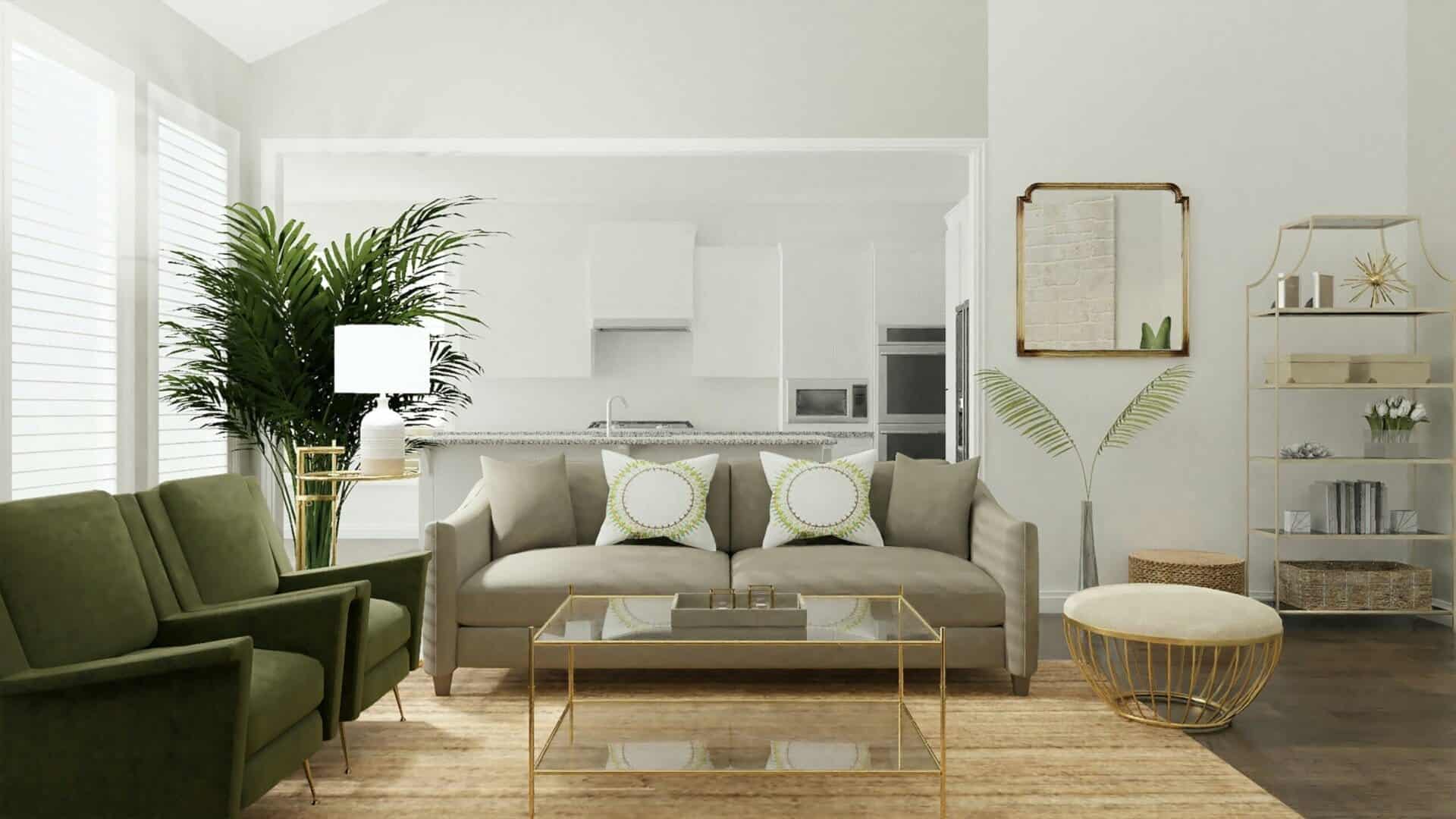
spacejoy trG8989WjFA unsplash scaled
4. Drawbacks and Challenges of CLQs
While Centralised Labour Quarters (CLQs) offer numerous benefits, they also come with certain drawbacks and challenges that need to be addressed to ensure their effectiveness and sustainability.
High Initial Investment
One of the primary challenges of CLQs is the high initial investment required for their construction and setup:
- Construction Costs: Building CLQs to meet regulatory standards and provide adequate amenities can be expensive.
- Land Acquisition: Securing suitable land for CLQs, especially in urban or industrial areas, can be costly and challenging.
- Infrastructure Development: Developing the necessary infrastructure, such as water supply, sewage systems, and electricity, adds to the overall cost.
Maintenance and Operational Costs
Maintaining and operating CLQs can also be a significant financial burden for employers:
- Regular Maintenance: Ensuring that facilities are well-maintained and meet hygiene and safety standards requires ongoing investment.
- Operational Staff: Employing staff to manage and operate the CLQs, including security, cleaning, and administrative personnel, adds to the operational costs.
- Utility Expenses: The cost of utilities, such as water, electricity, and waste management, can be substantial, especially for large CLQs.
Table: Drawbacks and Challenges of CLQs
| Challenge | Description |
|---|---|
| High Initial Investment | Construction costs, land acquisition, infrastructure development |
| Maintenance and Operational Costs | Regular maintenance, operational staff, utility expenses |
Inadequate Facilities
Despite the benefits, some CLQs may still suffer from inadequate facilities, which can negatively impact workers’ well-being:
- Overcrowding: In some cases, CLQs may become overcrowded, leading to insufficient personal space and privacy for workers.
- Poor Sanitation: Inadequate sanitation facilities can result in unhygienic conditions, increasing the risk of diseases.
- Lack of Amenities: Some CLQs may lack essential amenities, such as recreational areas, medical facilities, and proper dining spaces, affecting the quality of life for workers.
Social and Psychological Impact
Living in CLQs can have social and psychological impacts on workers:
- Isolation: Workers living in CLQs may feel isolated from the local community, leading to feelings of loneliness and depression.
- Cultural Differences: Workers from different cultural backgrounds living together can sometimes lead to conflicts and misunderstandings.
- Limited Freedom: The controlled environment of CLQs may restrict workers’ freedom and autonomy, affecting their mental well-being.
Regulatory and Compliance Issues
Ensuring compliance with government regulations and guidelines can be challenging:
- Frequent Inspections: Regular inspections by authorities can be disruptive and require significant administrative effort.
- Changing Regulations: Keeping up with changing regulations and standards can be difficult and may require frequent updates to facilities.
- Legal Risks: Non-compliance with regulations can result in legal issues, fines, and damage to the company’s reputation.
Conclusion
While Centralised Labour Quarters offer numerous benefits, they also come with several challenges and drawbacks that need to be carefully managed. High initial investment, maintenance costs, inadequate facilities, social and psychological impacts, and regulatory compliance issues are some of the key challenges associated with CLQs. Addressing these challenges is crucial to ensure that CLQs provide a safe, comfortable, and sustainable living environment for workers. In the next section, we will explore the government guidelines and requirements for CLQs, providing a detailed overview of the standards and regulations that must be met.
5. Government Guidelines and Requirements for CLQs
Centralised Labour Quarters (CLQs) in Malaysia are subject to stringent government guidelines and requirements to ensure they provide safe, hygienic, and comfortable living conditions for workers. These regulations are designed to protect the welfare of workers and ensure that employers adhere to minimum standards.
Regulatory Framework
The primary regulatory framework governing CLQs in Malaysia is outlined by the Ministry of Housing and Local Government (KPKT). The guidelines cover various aspects of CLQ construction and operation, including space requirements, sanitation facilities, and amenities.
Minimum Space Requirements
One of the key aspects of the guidelines is the minimum space requirement per worker. This ensures that each worker has adequate personal space, reducing overcrowding and promoting privacy.
- Sleeping Area: Each worker must have a minimum of 3.5 square meters of sleeping space.
- Common Areas: Adequate space must be provided for common areas such as dining rooms, recreational areas, and kitchens.
Sanitation Facilities
Sanitation is a critical component of the guidelines, with specific requirements for toilets, showers, and waste disposal systems.
- Toilets: There must be at least one toilet for every 15 workers.
- Showers: There must be at least one shower for every 10 workers.
- Waste Disposal: Proper waste disposal systems must be in place to maintain hygiene and prevent the spread of diseases.
Amenities and Facilities
CLQs must provide various amenities to enhance the quality of life for workers. These include:
- Recreational Areas: Spaces for relaxation and social activities.
- Medical Facilities: On-site medical services or access to nearby healthcare facilities.
- Kitchens and Dining Areas: Proper cooking and dining facilities to ensure hygienic meal preparation and consumption.
Table: Government Guidelines for CLQs
| Requirement | Description |
|---|---|
| Minimum Space Requirements | 3.5 square meters per worker for sleeping area, adequate common areas |
| Sanitation Facilities | One toilet for every 15 workers, one shower for every 10 workers, proper waste disposal |
| Amenities and Facilities | Recreational areas, medical facilities, kitchens and dining areas |
Safety and Security Measures
The guidelines also emphasize the importance of safety and security in CLQs:
- Fire Safety: CLQs must be equipped with fire safety measures, including fire extinguishers, alarms, and emergency exits.
- Security: Controlled entry and exit points, along with security personnel, are required to ensure the safety of residents.
- Regular Inspections: CLQs must undergo regular inspections to ensure compliance with safety and hygiene standards.
Compliance and Enforcement
Ensuring compliance with these guidelines is crucial for the effective operation of CLQs:
- Inspections: Regular inspections by government authorities are conducted to ensure that CLQs meet the required standards.
- Penalties: Non-compliance with the guidelines can result in penalties, including fines and potential closure of the facility.
- Reporting: Employers are required to maintain records and report any issues or incidents to the relevant authorities.
Conclusion
Government guidelines and requirements for Centralised Labour Quarters are essential to ensure that these facilities provide safe, hygienic, and comfortable living conditions for workers. By adhering to these regulations, employers can create a better living environment for their workforce, ultimately leading to improved productivity and well-being. In the next section, we will compare the living conditions in CLQs to typical worker housing, highlighting the differences and benefits of centralized accommodation.

spacejoy NpF OYE301E unsplash scaled
6. Comparison of CLQ Living Conditions to Typical Worker Housing
The living conditions in Centralised Labour Quarters (CLQs) are significantly better compared to typical worker housing, particularly those found at construction sites. This section will highlight the key differences and benefits of CLQs over traditional worker accommodations.
Space and Privacy
One of the most noticeable differences between CLQs and typical worker housing is the amount of space and privacy provided to workers.
- CLQs: Each worker is allocated a minimum of 3.5 square meters of sleeping space, ensuring adequate personal space and privacy.
- Typical Worker Housing: Workers often live in overcrowded conditions, with multiple individuals sharing small rooms, leading to a lack of privacy and personal space.
Sanitation and Hygiene
Sanitation and hygiene are critical aspects of worker accommodation, and CLQs are designed to meet high standards in this regard.
- CLQs: Equipped with sufficient toilets and showers (one toilet for every 15 workers and one shower for every 10 workers), ensuring cleanliness and hygiene.
- Typical Worker Housing: Often lacks adequate sanitation facilities, leading to unhygienic conditions and increased risk of diseases.
Amenities and Facilities
CLQs provide various amenities that enhance the quality of life for workers, which are often lacking in typical worker housing.
- CLQs: Include recreational areas, medical facilities, and proper kitchens and dining areas, promoting overall well-being.
- Typical Worker Housing: Usually lacks these amenities, resulting in a lower quality of life for workers.
Table: Comparison of CLQ and Typical Worker Housing
| Aspect | CLQs | Typical Worker Housing |
|---|---|---|
| Space and Privacy | Minimum 3.5 square meters per worker, adequate personal space and privacy | Overcrowded conditions, lack of privacy and personal space |
| Sanitation and Hygiene | Sufficient toilets and showers, high standards of cleanliness and hygiene | Inadequate sanitation facilities, unhygienic conditions |
| Amenities and Facilities | Recreational areas, medical facilities, proper kitchens and dining areas | Lack of amenities, lower quality of life |
Safety and Security
Safety and security are paramount in CLQs, with measures in place to protect workers from potential hazards.
- CLQs: Equipped with fire safety measures, secure entry and exit points, and regular inspections to ensure safety.
- Typical Worker Housing: Often lacks proper safety measures, increasing the risk of accidents and injuries.
Health and Well-being
The improved living conditions in CLQs have a direct positive impact on the health and well-being of workers.
- CLQs: Better hygiene, access to medical facilities, and recreational areas contribute to improved physical and mental health.
- Typical Worker Housing: Poor living conditions can lead to health issues, stress, and lower overall well-being.
Productivity and Morale
The better living conditions in CLQs also translate to higher productivity and morale among workers.
- CLQs: Workers are healthier, more motivated, and perform better due to the improved living environment.
- Typical Worker Housing: Poor living conditions can lead to low morale, higher absenteeism, and reduced productivity.
Conclusion
The comparison between Centralised Labour Quarters and typical worker housing clearly shows the significant benefits of CLQs. By providing better space, sanitation, amenities, safety, and overall living conditions, CLQs contribute to the improved health, well-being, and productivity of workers. In the next section, we will discuss the need for more CLQs in industrial areas, highlighting the importance of expanding these facilities to improve worker treatment.

spacejoy KSfe2Z4REEM unsplash
7. The Need for More CLQs in Industrial Areas
The demand for Centralised Labour Quarters (CLQs) in industrial areas is growing, driven by the need to improve the living conditions of workers and enhance productivity. This section will explore the reasons behind the increasing need for CLQs and the benefits of expanding these facilities in industrial regions.
Growing Workforce
The industrial sector in Malaysia is expanding, leading to an increase in the number of workers, particularly migrant workers.
- Increased Demand: The growing workforce requires adequate housing solutions to ensure their well-being and productivity.
- Migrant Workers: A significant portion of the workforce consists of migrant workers who need proper accommodation to avoid exploitation and poor living conditions.
Improving Worker Welfare
Providing decent living conditions for workers is crucial for their welfare and overall well-being.
- Health and Safety: Better living conditions in CLQs lead to improved health and safety for workers.
- Mental Well-being: Access to recreational areas and social activities helps reduce stress and improve mental health.
Enhancing Productivity
Better living conditions directly impact worker productivity and efficiency.
- Reduced Absenteeism: Healthier living conditions lead to fewer sick days and reduced absenteeism.
- Higher Motivation: Workers who feel valued and well-cared-for are more motivated and committed to their work.
Table: Benefits of Expanding CLQs in Industrial Areas
| Benefit | Description |
|---|---|
| Growing Workforce | Increased demand for housing, significant portion of migrant workers |
| Improving Worker Welfare | Better health and safety, improved mental well-being |
| Enhancing Productivity | Reduced absenteeism, higher motivation and commitment |
Compliance with Regulations
Expanding CLQs helps employers comply with government regulations and avoid legal issues.
- Adherence to Standards: Ensuring that all workers are housed in facilities that meet regulatory standards.
- Avoiding Penalties: Compliance with regulations helps avoid fines and legal issues related to worker accommodation.
Corporate Social Responsibility (CSR)
Investing in CLQs demonstrates a commitment to corporate social responsibility and enhances the company’s reputation.
- Positive Image: Providing decent living conditions for workers improves the company’s image and reputation.
- Attracting Talent: A reputation for good worker welfare can attract skilled workers and reduce turnover rates.
Conclusion
The need for more Centralised Labour Quarters in industrial areas is evident, driven by the growing workforce, the importance of improving worker welfare, and the benefits of enhanced productivity. Expanding CLQs not only helps employers comply with regulations but also demonstrates a commitment to corporate social responsibility, ultimately contributing to the long-term success of the business. In the next section, we will highlight how Golden Sharp Innovation is leading the way in CLQ solutions, providing high-quality and innovative accommodation options for workers.
8. Golden Sharp Innovation: Leading the Way in CLQ Solutions
Golden Sharp Innovation is at the forefront of providing high-quality Centralised Labour Quarters (CLQs) in Malaysia. With a commitment to innovation, quality, and customer satisfaction, Golden Sharp Innovation offers a range of versatile cabin solutions designed to meet the diverse needs of clients.
About Golden Sharp Innovation
Golden Sharp Innovation was founded with the mission of delivering innovative and efficient solutions for labour accommodation. The company’s dedication to quality and customer satisfaction has established it as a trusted name in the industry.
- Mission: To provide high-quality, versatile cabin solutions that enhance the well-being and productivity of the workforce.
- Vision: To be the leading provider of innovative accommodation solutions in Malaysia.
Our Offerings
Golden Sharp Innovation offers a wide variety of cabin types, each customizable to suit specific needs and preferences.
- Light Duty Premium: Ideal for site offices, worker’s quarters, and classrooms.
- Heavy Duty Economy: Suitable for site offices, worker’s quarters, and classrooms with medium-duty requirements.
- Heavy Duty Budget: Designed for all light-duty cabin uses, temperature control rooms, homestays, and fertilizer storage.
Table: Golden Sharp Innovation Cabin Types
| Feature | Light Duty Premium | Heavy Duty Economy | Heavy Duty Budget |
|---|---|---|---|
| Usage | Site Office, Worker’s Quarters, Classroom | Site Office, Worker’s Quarters, Classroom | All Light Duty Cabin’s Usage, Temperature Control Room, Homestay, Fertilizer Storage |
| Frame | Completely Steel Welded Frame (Low-Cost Anti Rust) | Completely Steel Welded Frame (Medium Duty Anti Rust) | Completely Welded Heavy Duty Steel Frame (Heavy Duty Anti-Rust with High Quality Gloss Paint Finish) |
| Roof | Metal Deck | Metal Deck | Hybrid Metal Deck Roof with EPS Insulation & White PVC Board Ceiling |
| Floor | 2nd Grade Plywood C/W Vinyl Finishing | 2nd Grade Plywood C/W Vinyl Finishing | 1st Grade Plywood C/W Medium Duty Vinyl Finish |
| Door | Metal Door | Metal Door | Grill Metal Door C/W Lever Lock and Key |
| Windows | Naco Window | Naco Window | Naco Windows C/W Safety Grill |
| Exterior | Metal Deck | 0.7mm Corrugated GI Plate | Double Sided PPGI Metal Clad with 20mm Polyurethane Insulation |
| Interior | 3mm Thick PVC Board (No Insulation) | 3mm Thick PVC Board (No Insulation) | 3mm Thick PVC Board |
| Lifespan | 3-5 Years | 3-6 Years | 8-16 Years |
Why Choose Golden Sharp Innovation?
Golden Sharp Innovation stands out for several reasons:
- Quality and Durability: Cabins are constructed with high-quality materials to withstand the rigors of daily use and the Malaysian climate.
- Customization: Tailored solutions to meet the specific requirements of each client, ensuring that accommodations are perfectly suited to their needs.
- Efficiency: Centralized labour quarters are designed to optimize space and resources, providing a practical and cost-effective solution.
- Customer Satisfaction: Commitment to delivering exceptional service and support, from the initial consultation to the final installation and beyond.
Contact Us
Partner with Golden Sharp Innovation for all your centralized labour quarter needs. Discover how our innovative solutions can benefit your project and enhance the living conditions of your workforce.
- Website: Golden Sharp Innovation
- Email: [email protected]
- Phone: 011-10897300
Conclusion
Golden Sharp Innovation is leading the way in providing high-quality and innovative Centralised Labour Quarters in Malaysia. With a focus on quality, customization, and customer satisfaction, Golden Sharp Innovation offers versatile cabin solutions that enhance the well-being and productivity of the workforce. Contact us today to learn more about our products and services, and let us help you create a better, more efficient working environment.










